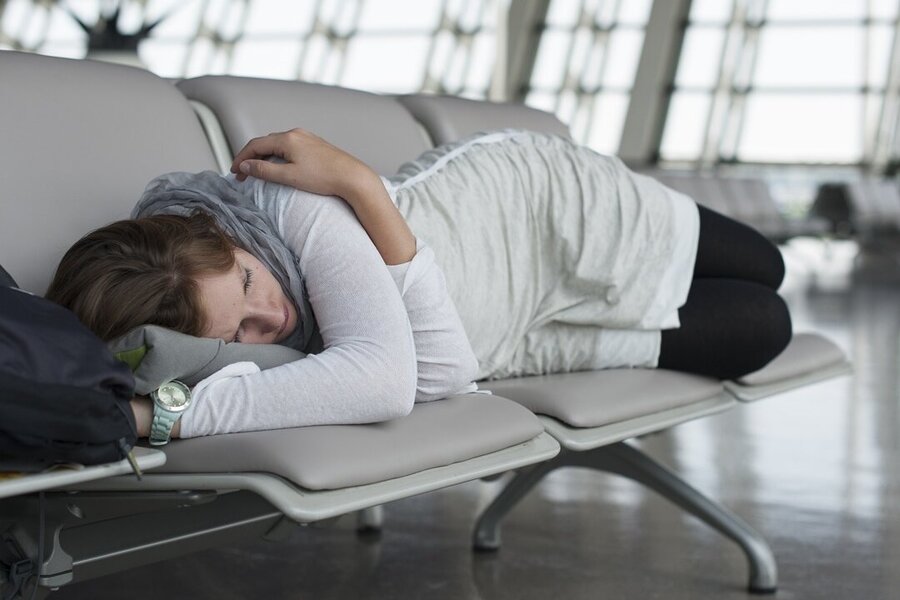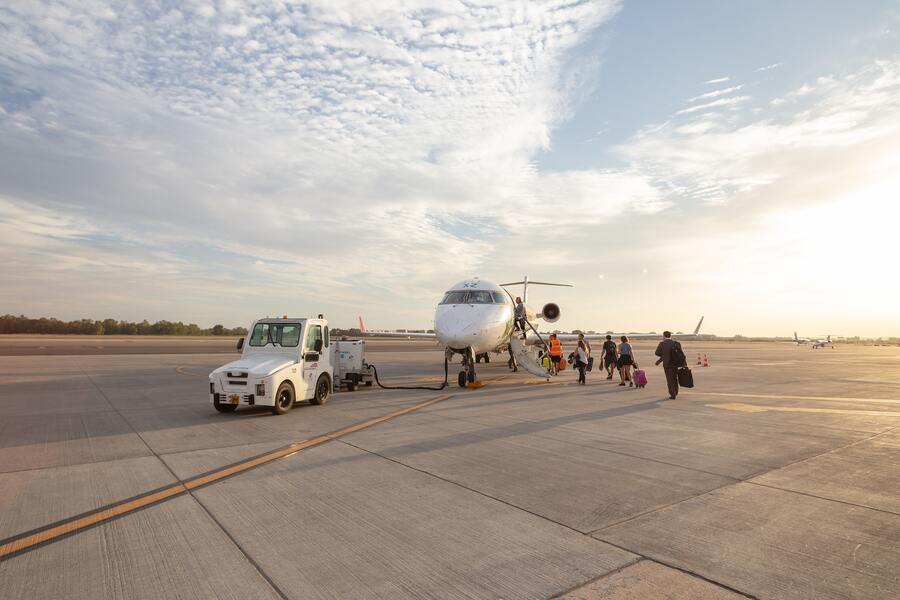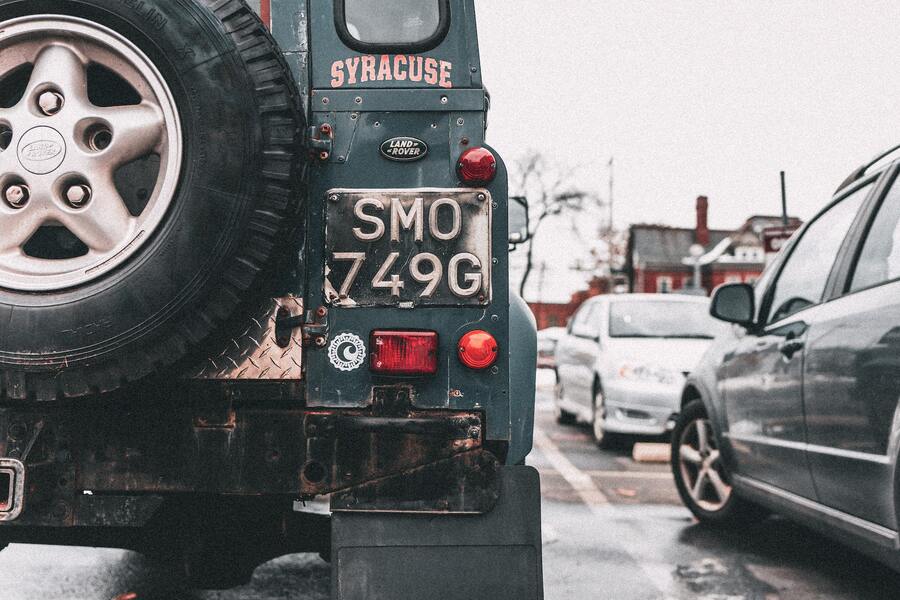Travel can take a toll on our bodies. Whether it's a long road trip or a flight, extended journeys can lead to fatigue, stress, and even motion sickness. While these effects are usually not severe enough to deter us from traveling, flying, in particular, can have its unique impact on our bodies due to the high altitudes and extended durations involved. Let's delve into what happens to our bodies during air travel and explore ways to make the experience more comfortable!
So what should you pay special attention to feel well while traveling by plane?

Source: camilo jimenez/Unsplash
1. Dehydration
Airplane cabins have lower humidity levels compared to what we're accustomed to on the ground. The degree of humidity can vary, with first-class cabins often experiencing levels as low as 5%, while economy class may have around 15 to 20%. A significant portion of the cabin air is sourced from the outside, and this fresh air can be as dry as 1% humidity. This low humidity can lead to dry noses, skin, and lips, and even impact our sense of taste. So, what can you do to combat this dry environment? Choosing flights on newer aircraft models like the Boeing 787 or Airbus A350 can help, as they offer better humidity control. Staying hydrated by drinking water during the flight is essential and can also help prevent bloating. Additionally, consider using eye drops, nasal spray, and moisturizer. If you wear contact lenses, switching to glasses during the flight may offer more comfort.
2. Pressure imbalances
During takeoff and landing, you may experience discomfort in your ears due to changes in air pressure. This phenomenon, known as ear barotrauma, occurs when there's an imbalance between the air pressure in your middle ear and the aircraft's cabin pressure. Normally, the eustachian tube, which connects to the middle ear, helps equalize these pressures. However, if you have a cold or blocked sinuses, this equalization may not happen, resulting in ear pain. Simple actions like swallowing, sucking on a sweet, or pinching your nose can alleviate this discomfort. For more severe cases or persistent pain after the flight, consulting a doctor may be necessary, especially for infants with undeveloped eustachian tubes.
3. Jet lag

Source: Google Search
Jet lag is a common issue when traveling across multiple time zones. Our bodies have internal clocks, and jet lag occurs when our circadian rhythms are disrupted due to the shift in daylight hours. Long-haul flights can exacerbate this problem. Strategies to minimize jet lag include trying to adapt to the new time zone as quickly as possible by setting alarms, eating at local meal times, and staying hydrated with water (while avoiding caffeine and alcohol). Some people consider melatonin supplements, although their effectiveness is inconclusive, and seeking medical advice is advisable if you're considering this option. Additionally, traveling east to west is generally easier on the body than the reverse, as you gain time rather than lose it.
4. Deep vein thrombosis
Puffy ankles and swollen feet after a long-haul flight are common complaints among travelers. Prolonged periods of immobility, whether on a plane, bus, or even at home, can hinder blood flow, leading to potential issues like deep vein thrombosis (DVT). While DVT is rare, it can have serious consequences. To reduce the risk, it's important to move around the cabin regularly and perform in-seat exercises like ankle rotations and leg stretches. Airlines often provide examples of in-flight workouts in their magazines or entertainment systems that can be done without leaving your seat. Those at higher risk of DVT can opt to wear compression socks, which can help reduce swelling and improve circulation.
Reliable airport parking with ParkingNearAirports.io – your travel companion!

Source: Stas Knop/Pexels
Have you ever heard something about off-site parking? If not, we recommend you take a closer look at this part of the article, as this information will be handy for those who prefer to travel by air and get to the airport by their own car.
Most people suppose that parking at the airport is the fastest and most convenient option for them. However, it's not actually true. We'll explain to you why.
To be true, being in a terminal parking lot isn't convenient at all. Although on-site airport parking is the nearest place where you can leave your vehicle for the period of a trip, you can face the following difficulties:
- You will need to find a spot in a crowded lot,
- You will need to carry the luggage all the way through the parking lot,
- You must pay expensive fees without great service.
Sounds not good, right? However, we found an excellent solution for you – in this case, off-site parking can become a savior for you. So if you're trying to find a parking spot with great service nearby the airport you're flying from and don't want to leave there the most significant part of your budget, pay attention to this option.
How does it work?

Source: Craig Adderley/Pexels
Obviously, people who chose a car as a way to get to the airport want to leave their vehicle safely while traveling and not to face the problems we described above. So what can off-site airport parking offer its customers?
Although a few miles usually separate such parking from the airport, you shouldn't worry about this. Off-site parking provides free shuttles going back and forth between the parking lot and the airport. Thanks to this, it removes any worries about getting stuck in traffic on the way to the airport during peak times. So all you need to do is choose the best time for you and inform the parking lot staff.
How does it work? Actually, everything is straightforward: when you come to the entrance, the staff will remove your luggage from your car and load it onto the shuttle, which will take you and your bags to the terminal. Then, the vehicle will be parked securely.
In addition, this type of parking is much cheaper, and this is good news, as nobody wants to waste money. Therefore, off-site parking is the perfect option to receive excellent service and save money at the same time.
Want to find some great offers? You don't need to go somewhere – just find it right here!

Source: Jeffrey Czum/Pexels
We're glad to inform you that you can find this solution right here. Our booking platform, ParkingNearAirports.io, offers the best prices on airport car parking and bundles hotel and parking packages. Besides, we provide the services for top cruise ports in Florida, Louisiana, Maryland, New Jersey, and Texas.
Our platform allows you to reserve a parking spot through a few clicks within the application. As a result, customers receive a booking confirmation and a guaranteed parking spot upon arrival at the off-airport lot. Besides, if plans change, you can cancel hassle-free and receive a refund.
To understand it better, we would like to give you an example. Let's imagine that you live in Michigan. If you're planning a trip to New Jersey, you can use the services of cheap valet parking Detroit Airport. If you're coming from New Jersey, the situation is the same – you can choose affordable EWR off-airport parking. So it just depends on the place you're flying from.
Also, ParkingNearAirports.io offers its customers special airport parking coupons. With the help of these coupons, you can make the price for parking even two times less. So don't forget to use them to save as much money as possible.
You can find all the necessary and helpful information connected with the off-site airport parking on our official website. Enjoy traveling!






